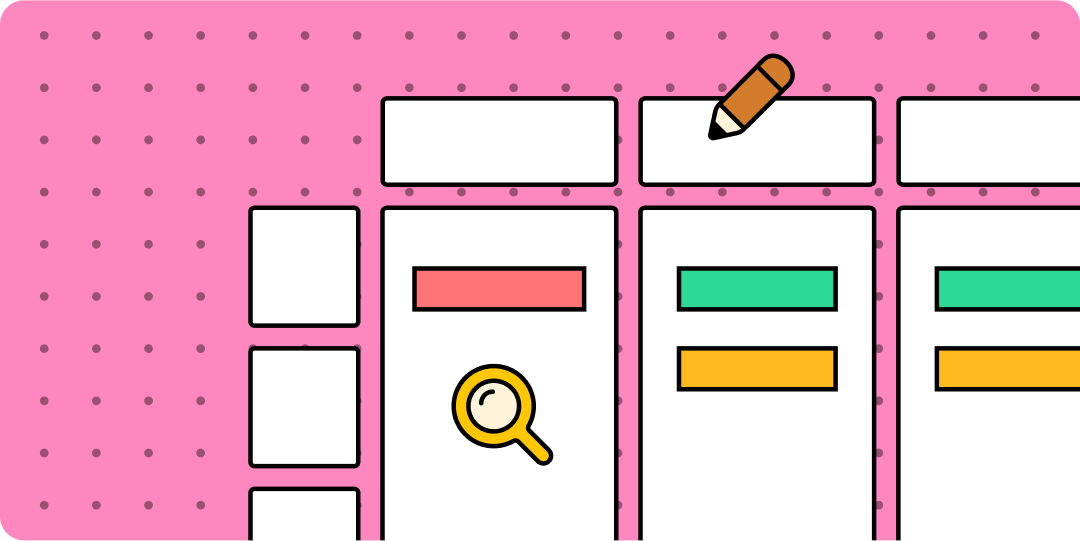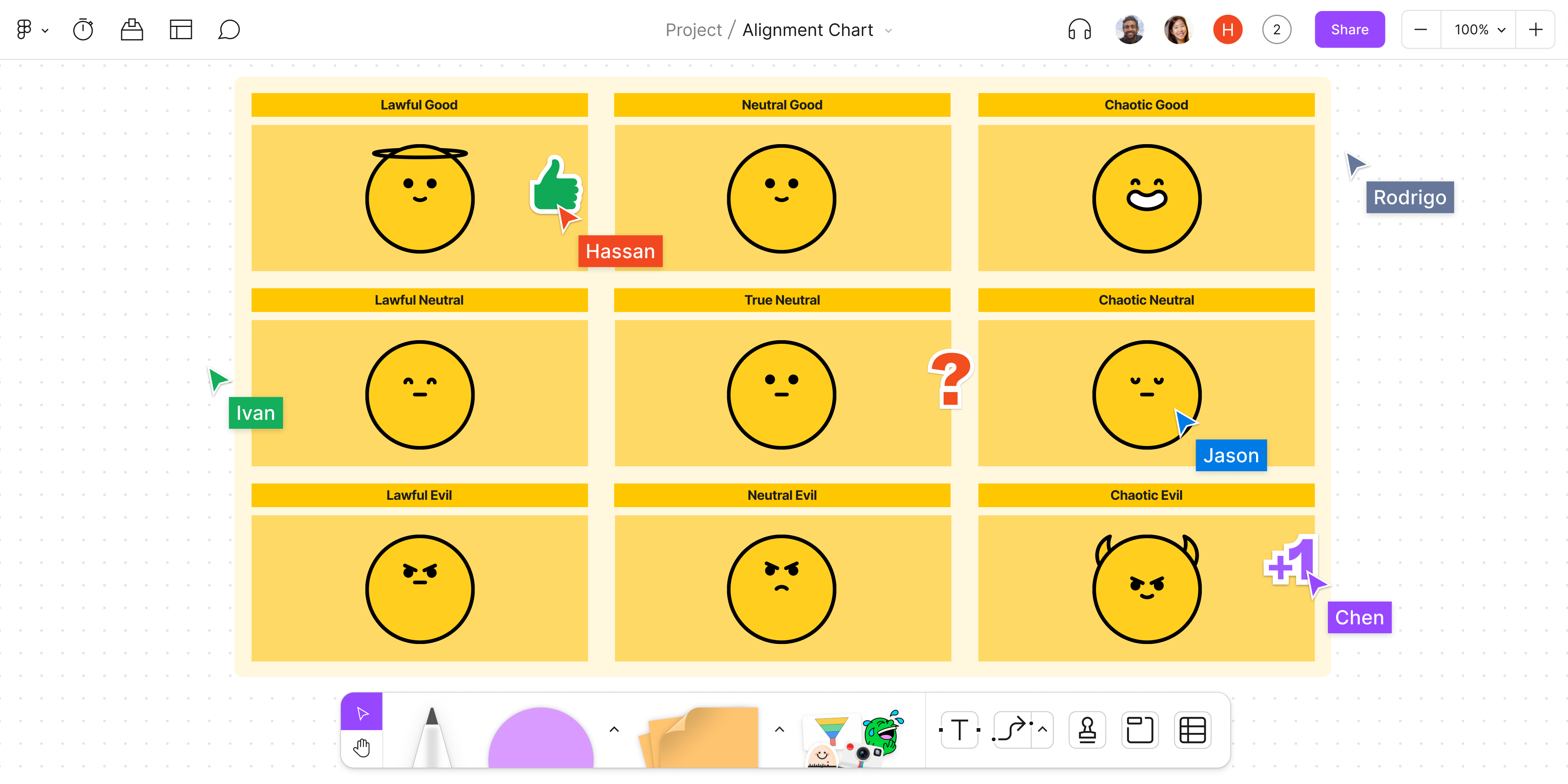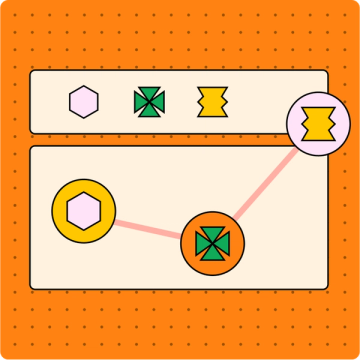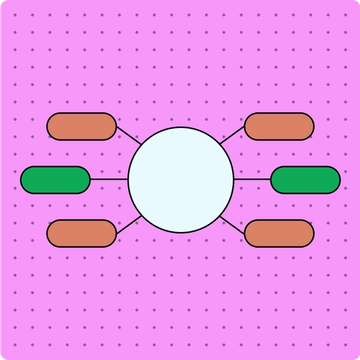Alignment charts explained

Who says work can't be fun? Alignment charts spark lively, constructive team discussions on any topic. Bring an alignment chart to your next team bonding exercise, user person brainstorm, or product roadmapping session to unleash creativity, collaboration, and pure gamer excitement.
Read on to learn more about:
- What is an alignment chart
- How your team can benefit from an alignment chart
- Creative alignment chart examples
- Making an alignment chart in FigJam
What is an alignment chart?
An alignment chart is a simple 3x3 grid with opposing forces on two axes—good vs. evil, and lawful vs. chaotic. Challenge your team to use the nine boxes on the grid to categorize anything that comes to mind: comic book characters, K-pop boy bands, different design approaches, project objectives, and more.
For example, try categorizing Captain America and Black Widow. Are they good or evil, lawful or chaotic? And what about those design approaches: Where do futuristic and retro fall? Alignment charts offer plenty of room for discussion.

Start aligning your team with a free template
Bring your whole team together with this free alignment chart template.
3 benefits of an alignment chart
- Encourage lively debate. Alignment charts are so easy and fun to fill in, they're great as ice breakers or idea generators.
- Increase (you guessed it!) alignment. By filling in an alignment chart together, teams can establish a shared understanding on any topic.
- Guide decision-making. Team members can refer to an alignment chart to remind themselves where their priorities lie.
What are alignment charts used for?
First used in the role-playing game Dungeons and Dragons, alignment charts were created to help D&D players define different characters according to their moral and ethical values. These charts help guide D&D characters throughout the game, informing their actions and responses. Alignment charts have since exploded in popularity across popular culture, with high-profile examples that include :
- The NBA alignment chart by Spotify’s The Ringer
- Workplace behavior alignment chart by Globis Insights
- Where Americans sit on the D&D alignment chart by YouGovAmerica
- The bird alignment chart by NC Birding Trail
- The sandwich alignment chart by @Mattomic on Twitter
How exactly do alignment charts work?
To get conversations started, alignment charts typically map items against two different dimensions:
- The vertical axis represents the good vs. evil dimension. The top row is good, middle row is neutral, and bottom row is evil.
- The horizontal axis is the lawful vs. chaotic dimension. The left-hand column is lawful, middle column is neutral, and right-hand column is chaotic.
Between the two dimensions are nine different alignments, or categories:
- Lawful good describes characters or things that are systematic, orderly, and principled. Lawful good characters (e.g., Hermione Granger) promote the greater good, while following established procedures or rules.
- Neutral good fits anyone or anything acting with the best intentions for everyone involved. Neutral good characters (e.g., Wonder Woman) do the right thing, even if it sometimes means bending the rules.
- Chaotic good represents a willingness to challenge authority and break rules to achieve positive change. Chaotic good characters (e.g., Robin Hood) are rebels with both a conscience and a cause.
- Lawful neutral defines any character or approach that follows a strict code to maintain stability and order. Lawful neutral characters (e.g., James Bond) believe in and support the rule of law, no matter whether it’s good or evil.
- True neutral applies to items, objectives, or characters that aren’t good or evil, lawful or chaotic. True neutral characters (e.g., The Dude in The Big Lebowski) lack conviction. They don’t follow any moral code and simply do what’s best for them.
- Chaotic neutral signifies a quest for absolute freedom and individuality. Chaotic neutral characters (e.g., Cat Woman) buck tradition and authority. They’re often impulsive and unpredictable.
- Lawful evil covers anyone or anything that follows a strict code, hierarchy, or system for personal gain at any cost. Lawful evil characters (e.g., Darth Vader) are calculating, organized, and tyrannical.
- Neutral evil conveys an utter lack of morals or ethics. Neutral evil characters (e.g., Cruella de Vil) are destructive, corrupt, and out for themselves.
- Chaotic evil means malevolent self-interest combined with personal freedom. Chaotic evil characters (e.g., The Joker) are dangerous, unpredictable, and bad to the bone.
Make an alignment chart with FigJam
Ready to explore some new ideas with your team? FigJam’s ready-made alignment chart template makes it simple. All you have to do is:
- Choose a topic or category for your alignment chart. You can brainstorm topics to cover with FigJam’s online whiteboard tool, with the help of FigJam’s nifty guide for effective collaboration.
- Organize your chart. Pick nine items related to your topic, and challenge your team to decide where they belong on your alignment chart.
- Add images, emojis, or illustrations to represent each of the nine alignments.
- Share your alignment chart with relevant stakeholders, and gather comments and feedback.
Ready to have some fun at work?
Sources
[3] https://www.wnyc.org/story/the-chart-that-explains-everyone-character-alignment/
Keep reading

How to make a customer journey map
Learn how customer journey maps can help you sharpen design and marketing efforts, turning casual visitors into passionate brand advocates.
Mehr erfahren

How to mind map
How can you remember the important stuff and forget the rest? Learn how to mind map, and you’ll learn how to think more clearly.
Mehr erfahren

How to create a product development roadmap
Get your next product effort off to a running start with a product development plan that clearly maps out your goals, priorities, and timelines.
Mehr erfahren




